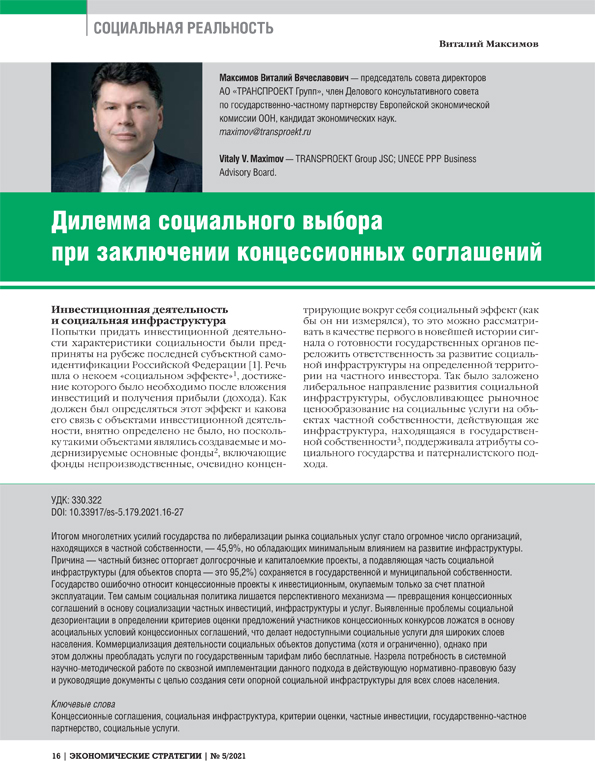Social Choice Dilemma in Concluding Concession Agreements
DOI: https://doi.org/ 10.33917/es-5.179.2021.16-27
Result of the government’s many years of efforts to liberalize the market of social services is a huge number of organizations that are privately owned — 45,9%, but which have minimal impact on the infrastructure development. The reason is that private business alienates long-term and capital-intensive projects, and the overwhelming part of the social infrastructure (for sports facilities it constitutes 95.2%) remains in the state and municipal ownership. The state mistakenly classifies concession projects as investment projects that are paid back only through fee-based exploitation. Thus, social policy is being deprived of a promising mechanism — transformation of concession agreements into the basis for socialization of private investments, infrastructure and services. The identified problems of social disorientation in specifying criteria for evaluating the proposals of participants in concession tenders form the basis for asocial conditions of concession agreements, which makes social services inaccessible to the general population. Commercialization of the activities of social facilities is admissible (although in a limited sense), but at the same time, services at state tariffs or free of charge should prevail. There is a need for systematic scientific and methodological work on cross-cutting incorporation of this approach into the current regulatory framework and guidelines in order to create a network of basic social infrastructure for all segments of the population.





